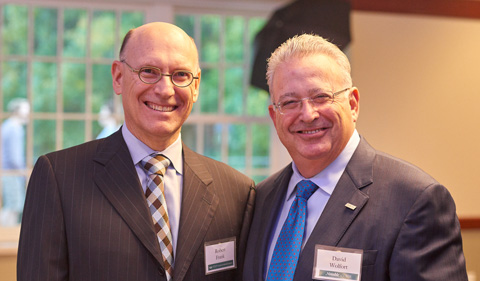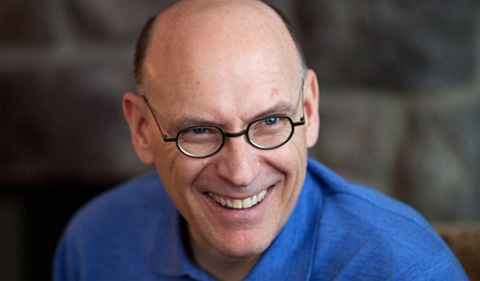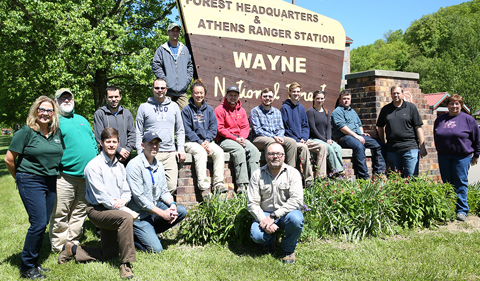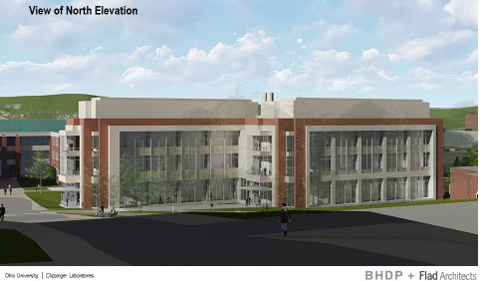Arriving at the College of Arts & Sciences in 2012, Dean Bob Frank found transformative power in one word: Yes.
“Departments and faculty had been hunkering down through the recession, and I tried to open a space for innovation and experimentation,” he said. “People expected a response of ‘no’ to everything. There was a lack of imagination and support for new initiatives or good ideas. I hope that we opened that up.
“Departments were operating in near total isolation from each other. I aspired to create a sense of common purpose and to help remind people that we had common values around liberal arts education that needed to be rediscovered.”
Discovering Common Causes
And at the heart of a liberal arts education was getting students and faculty involved in addressing 21st century issues from multi-disciplinary approaches.
Frank invited faculty to join conversations around topics of the times. And what emerged were groups of faculty from different departments, and even different colleges, discovering common interests in sustainability, war and peace, the law, food, poverty, and more.
Freed from the academic constraints of majors and disciplines, curricular themes emerged as groups of faculty realizing their individual courses could contribute to a bigger conversation. Food Studies grew to encompass courses from writing to politics to sustainable agriculture. War and Peace students learned about the physics of nuclear weapons as well as regional politics.
“Think of all the ways in which we did things that hadn’t been done before—things like interdisciplinary team teaching, 1-credit courses based on out-of-class experiences, the Prediction Tournament,” Frank commented at his final meeting with themes faculty leaders in April.
Empowering Faculty and Staff
Another repercussion of the recession was that departments were left with few resources to support faculty and staff professional development, including faculty research and conference participation.
Funding was restored to support faculty members’ participation in academic conferences. A college research committee was formed and research challenge funds were restored.
A year-long professional development series was established for new faculty. Dossier workshops were started to help faculty, including lecturers, prepare for the promotion process.
And Faculty Learning Communities were funded on faculty-generated topics from grant writing to team-based learning to global education and diverse classrooms.
Staff were also on Frank’s mind.
“Having staff see themselves not as a bunch of individuals but as having some sense of common cause, sharing and being supported was important,” he said.
A College Administrator Network was formed, leadership opportunities created, and professional development workshops started.
Creating Community Linkages
Frank also saw untapped opportunity in the small towns and huge forests of Southeastern Ohio.
Captivated by the cultural history of the region once dominated by mining and industry, Frank connected with organizations from Rural Action to Little Cities of the Black Diamonds.
“We began using Southeastern Ohio as an expanded learning asset, partnering with local organizations to enrich educational experiences of our students,” he said. Faculty found ways to connect courses, research and field trips, and students found internship and service-learning opportunities as they discovered a vibrant region with many needs.
Having documented much of the region’s flora and fauna with his camera—and hiked many of its trails, Frank saw the verdant hills of Southeastern Ohio as a wide-open learning environment.
The leadership of Wayne National Forest was an eager partner.
The symbiotic relationship of the two large organizations—a state university and a national forest—is beneficial not just for students, but for the larger community. Last year half a dozen student interns amazed the Wayne staff by documenting the botany, wildlife and archaeology of 30 miles of a proposed 88-mile mountain bike trail. Their work jump-started the Baileys Mountain Bike Trail System and propelled investment in a project expected to bring tourism and much-needed economic development to the region.

Dean Bob Frank and David Wolfort, former chair of the OHIO Board of Trustees, at the Notable Alumni Awards dinner.
Bringing Alumni Back
Frank’s passion for the liberal arts includes a belief that most Arts & Sciences students aren’t trained for a specific profession. They are prepared to be leaders and problem-solvers in a complex world. To help translate that to today’s students and parents, anxious about careers, Frank enlisted the help of college alumni.
Frank wanted alumni to come back to campus to share career advice, internship opportunities, and stories about the various pathways that liberal arts careers take. Last year he recognized the first cohort of Arts & Sciences Notable Alumni—37 alumni, including Distinguished Alumni, who are doing just that.
Increasing numbers of alumni and friends now come back each spring for the Arts & Sciences Alumni-Student Networking Reception, where hundreds of students talk to alumni, have their resumes reviewed, and practice networking skills.
“We’re trying to help students think about their career search early in their college years,” Frank said. He added that college advisers have created a four-year checklist for students, and the college partners with the Career and Leadership Development Center to provide individualized career coaching for students.
Old Buildings and New Programs
Frank’s tenure encompassed more than a few challenges, including beautiful-but-aging buildings that put students and faculty too close to nature—leaky roofs, hot in the summer, cold in the winter.
“We were able to get attention for our high-use academic buildings—Ellis, Morton and Clippinger,” Frank said. Ellis rehabbing is under way, and repairs have been made to Morton and Clippinger. Groundbreaking starts this summer for a new chemistry building.
With cost pressures mounting on the college budget, Frank put out a call to faculty to bring any and all new revenue ideas. Three years later, the college is launching its eighth online program, having added master’s degrees in English, Chemistry and Law, Justice & Culture, along with multiple certificates.
New initiatives under Frank included a STEMstart program to help science students get ready for the rigors of their first college semester. And all undergraduates benefit from annual advising surveys and measures to address shortcomings.
Frank adds that a robust communications infrastructure now includes A&S Forum, mobile-friendly websites, and alumni communications such as Engage.
“I think we’ve made things happen in my time,” Frank said.
—By Lori Bauer, College of Arts & Sciences























Comments